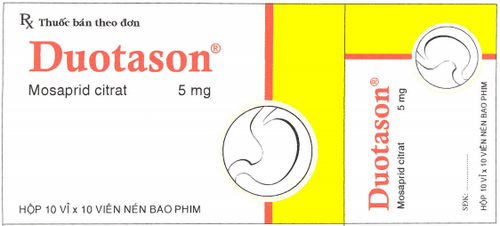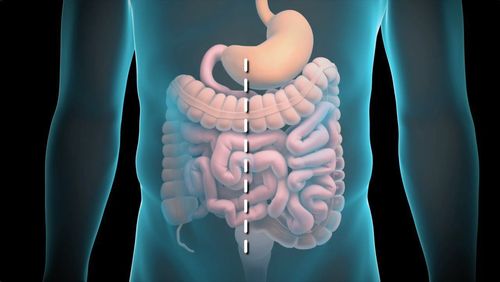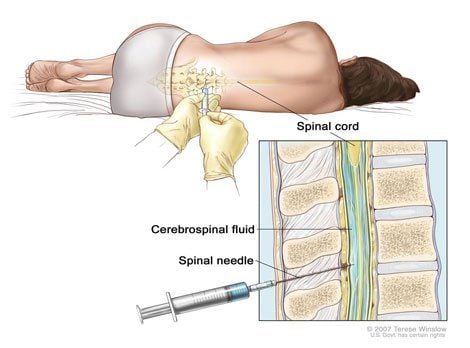This is an automatically translated article.
The human nervous system consists of a network of nerve cells, responsible for transmitting signals from the brain and spinal cord to the rest of the body and vice versa.
1. Overview of the human nervous system
The human nervous system is an important network of nerves in charge of many different roles. Along with the endocrine system, the human nerves help control and maintain various body functions. In addition, they also help you interact with your surroundings.
Nerve is a bundle of fibers responsible for receiving and sending messages between the brain and other parts of the body. Messages are sent based on chemical changes and action potentials in the cell. The cells that make up human nerves are called neurons.
Although it is not known exactly how many nerves there are in the human body, many documents have concluded that there are hundreds of nerves in the body, made up of billions of nerve cells, spread throughout the body. length from the top of the head to the tips of the toes.
2. Human Nerves
2.1. Structure of the nervous system The human nervous system is divided into two main groups, including:
Central nervous system (CNS): Is the command center of the body, including the brain and spinal cord. The brain is protected within the skull, while the vertebrae cover the outside of the spinal cord. Peripheral Nervous System (PNS): Made up of nerves that branch from the CNS. They are bundles of axons responsible for transmitting signals. The peripheral nervous system can be further subdivided into the part responsible for sensation and movement of the body:
The sensory organ transmits information from both inside and outside the body to the central nervous system nurse. This is the part that plays the role of receptors such as pain, smell and sight. The motor organs receive signals from the CNS and trigger specific actions, including conscious (such as arm movements) or involuntary movements (such as bowel movements).

Dây thần kinh con người có nhiệm vụ nhận, gửi thông điệp giữa não và các bộ phận khác.
2.2. Cranial Nerves The cranial nerves are part of the peripheral nervous system. The human body has 12 pairs of cranial nerves.
Cranial nerves can perform sensory function, motor function, or be responsible for both. Example:
The olfactory nerve plays a role in sensing sensations and transmitting odor information to the brain. The oculomotor nerve controls eye movements. The facial nerve has both sensory and motor functions. They receive and transmit taste-sensing information from the tongue, and also control the movement of certain muscles in the face. Cranial nerves originate in the brain and distribute to the head, face, and neck, with the exception of the vagus nerve (the longest nerve of the cranial nerve). The vagus nerve involves many areas of the body, including the throat, heart, and digestive tract.
2.3. Spinal Nerves The spinal nerves belong to the peripheral nervous system. The human body has 31 pairs of spinal nerves, which branch from the spinal cord. They are grouped according to the spinal regions involved.
The spinal nerves perform both sensory and motor functions. This means they can send sensory information to the central nervous system, while also receiving commands from the central nervous system to the periphery of your body.
The spinal nerves are often more closely related to the sclera (a specific area of skin that is signaled by a spinal nerve). Each spinal nerve has the function of transmitting sensations from a specific area of the skin to the central nervous system.
There are hundreds of peripheral nerves distributed throughout the body. Many nerves receive sensory signals from the skin and internal organs, and fuse together to form sensory branches of the cranial and spinal nerves.
The human nerves that receive motor signals from the cranial and spinal nerves divide into many smaller nerves, which in turn divide into a series of smaller nerves. So, a spinal nerve or cranial nerve can divide into 2 to 30 peripheral nerves.
3. Structure of a neuron
Nerve cells are responsible for the transmission of nerve impulses. They are composed of three main parts:
Cell Body: Similar to other cells in the human body, the cell body contains various components of the cell, such as the nucleus. Dendrites (or dendrites): An extension from the cell body. They receive information from other neurons. The number of dendrites per neuron can vary. Axon: Originating from the cell body, usually longer than dendrites, and carrying signals away from the cell body, and is received by other nerve cells. The axon is usually covered by a sheath called the myelin sheath, which protects and insulates the axon. The human brain alone contains about 100 billion different neurons. The human nerves play a particularly important role in regulating body activities. Almost all human life activities are controlled by the nervous system, which consists of a complex network of interconnected nerves that operate in a rhythmic and high-speed conduction. This ensures that the human body always works synchronously and accurately.
Please dial HOTLINE for more information or register for an appointment HERE. Download MyVinmec app to make appointments faster and to manage your bookings easily.
Reference source: healthline.com












